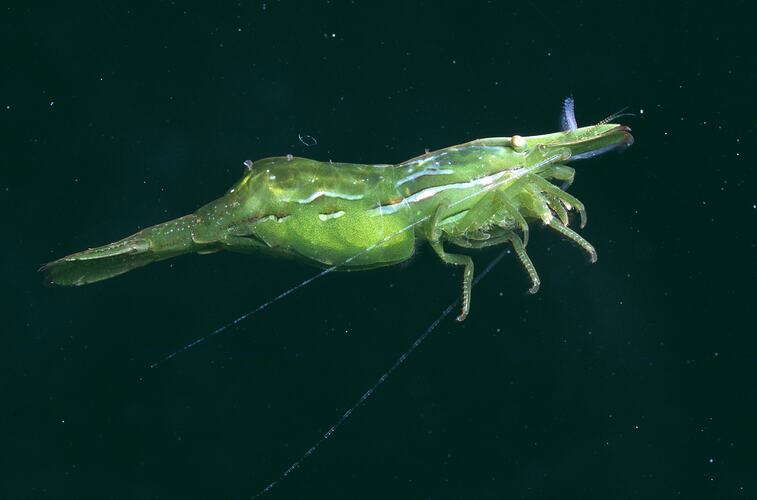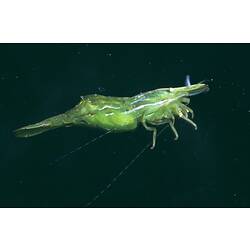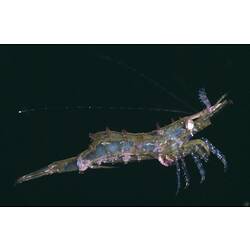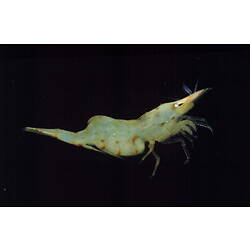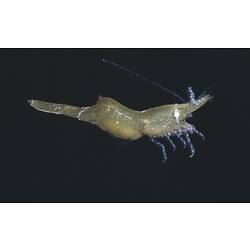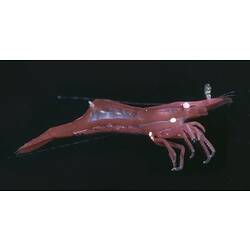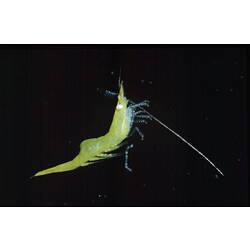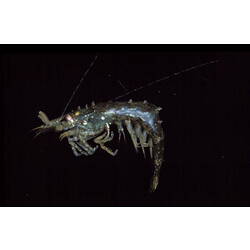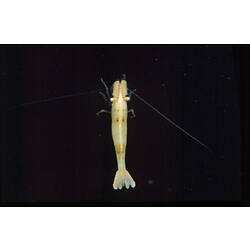General Description
Rostrum (protrusion between eye stalks) prominent, broad at base, without dorsal teeth and with 2-6 ventral teeth. Carapace with small spine above orbit of eye. Fifth segment of second leg with 3 articles (beadlike sub-sections of the leg). Legs without gills (arthrobranchs). Abdominal somite (section) 6 without articulating posterolateral corner. Up to 2.5 cm long.
Biology
The Weed Shrimp is common but its coloration is an effective disguise. The colour varies depending upon the seaweed on which it lives; solidly bright green on green algae and deep red on red algae. They are probably algal browsers freely moving among their habitat. They usually walk on their legs but can use the strong muscular abdomen and tail fan combined to reverse the shrimp quickly out of danger. This behaviour is common to most caridean shrimps.
Distribution
Southern temperate oceans, including southern Australia.
Habitat
Subtidal to 124 m depth.
More Information
-
Animal Type
-
Animal SubType
-
Brief Id
Rostrum prominent, broad at base, without dorsal teeth and with 2-6 ventral teeth; two pairs of claws are shorter than the other legs; abdomen has a strong bend.
-
Maximum Size
25 mm
-
Habitats
-
Diet
Organic matter
-
Hazards
Small claws but unlikely to nip.
-
Endemicity
-
Commercial
No
-
Conservation Statuses
DSE Advisory List: Not listed, EPBC Act 1999: Not listed, IUCN Red List: Not listed
-
Depths
Shallow (1-30 m), Deep ( > 30 m)
-
Water Column Locations
On or near seafloor
-
Taxon Name
-
Scientific Author
Stimpson, 1860
-
Common Name
Weed Shrimp
-
Phylum
-
Subphylum
-
Superclass
-
Class
-
Subclass
-
Superorder
-
Order
-
Suborder
-
Infraorder
-
Family
-
Genus
-
Species Name
australiensis
